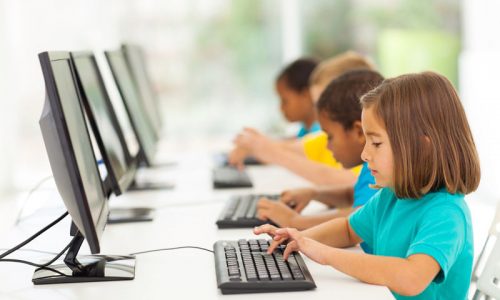State education officials are a step closer to revamping the delivery of education statewide.
The Wyoming Department of Education recently released the 2017-2021 Digital Learning Plan.
“This comprehensive five-year strategic plan was written around the importance of incorporating digital learning and education technology into the classroom and addresses the need for equitable access to educational opportunities for all students,” Superintendent of Public Instruction Jillian Balow said in a news release.
The introduction of the plan imagines a new world of education, in which a student will have some traditional classes, some classes that are offered entirely online, and some taught in a classroom with students working at their own paces through the use of digital tools.
In September, the Department of Education announced it joined the Future Ready Initiative.
Laurel Ballard, the department’s student and teacher resources team supervisor, said joining the initiative would give the department “access to resources and professional development at the state level, as well as at the district level.”
She said those resources will help teachers develop online courses, help school districts integrate technology into classrooms and help teachers use the technology to personalize students’ educational experiences.
The Future Readiness Initiative is set up around seven key areas:
- Curriculum, instruction and assessment
- Use of space and time
- Robust infrastructure
- Data and privacy
- Community partnerships
- Personalized professional learning
- Budget and resources
In forming the Digital Learning Plan, the Department of Education used information gathered from statewide surveys administered to educational professionals and students, a listening tour and focus groups.
The department then separated the feedback into those seven Future Ready categories, and created goals to overcome any barriers districts and schools may have to succeeding with implementing technology in each area.
For instance, under “curriculum, instruction and assessment,” the department lists a goal as “Provide a common understanding of what students should know, understand, and be able to do, specific to digital learning and digital citizenship.” The department’s recommendation to meet that goal is “Develop K-12/16 Digital Learning and Computer Science Education standards.”
The report shows those standards should be clear enough that educators can use them to ensure they are meeting state statutes.
Under “use of space and time,” the report lists a goal as “offer quality online and blended courses for students that include opportunities for students to demonstrate mastery of content in a variety of ways.” A recommendation for meeting that goal is “develop a best practices guide for teaching online and blended courses.”
Kari Eakins, communications director for the Department of Education, said the purpose behind furthering the integration of technology in the classroom is “to try to make sure we’re creating more opportunities for students and helping teachers keep the lead in the classroom.”
Eakins said the department began by making sure all Wyoming schools have the capability to support technology in the classrooms.
“One of the first parts that we’ve done the most on is the infrastructure. If we teach people how to use (technology), but they don’t actually have the capabilities in their schools, then that’s kind of pointless,” she said.
The final section of the report lists three schools that already are implementing technology in creative ways. According to the report, Upton High in Weston County School District 7 already uses blended classrooms across the school and sees higher student involvement because of the effort.
But Eakins said it may not look like that at every school in the state.
“It’s going to look different in each school district, and it should. In some cases, it’s about volume, and in some it’s about overcoming distance,” she said.

